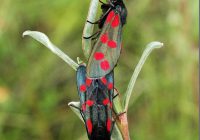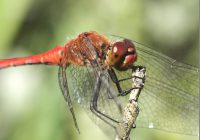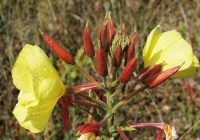Dr Phil Smith’s Wildlife Notes
July 2016

Apart from a one-day heatwave on 19th when temperatures reached an oppressive 32oC, the month’s weather was unexceptional. Rainfall seems to have been about average but it was often cooler than expected in the first two and the last weeks. Predictably, the Devil’s Hole slack gradually dried up, though there was still a little surface water in the deepest parts (see below). This allowed the remaining Natterjack tadpoles to emerge as toadlets, members of my guided walk on 23rd being thrilled to see these yellow-striped miniature toads running about. There are, of course, other amphibians in the dunes and I bumped into a huge, unusually marked, Common Frog at Birkdale.
Great excitement came in July with the confirmation of two new butterflies for the coast. Earlier reports of Ringlets in Ainsdale National Nature Reserve proved well-founded and I managed to net two briefly on 13th. There were several more sightings in sheltered woodland firebreaks. This species has been spreading north for many years but, although it has already colonised large parts of Scotland, it strangely missed out much of North Merseyside and Lancashire. Evidently the gap is now being filled
More unexpected was an Essex Skipper caught by Richard Walker in the Ainsdale reserve. Although it is also on the move northwards, this tiny butterfly’s nearest known locality is over 30 miles to the south-east. With friends, I looked for more but this species is hard to separate from the very numerous Small Skippers and we failed to find any of the newcomers. Compensation was provided by a good hatch of the rare Forester moth, Trevor Davenport and I counting 13 at Pinfold Meadow. Apart from the Small Skipper, most butterflies seemed to be down in numbers, perhaps due to the cool weather, though the ubiquitous Gatekeeper increased markedly towards the end of the month and I even spotted a Painted Lady on the last day. In contrast, red-and-black Six-spot Burnet moths appeared widely in abundance, often nectaring on Ragwort.
Like some butterflies, dragonflies were also thin on the ground, my annual guided walk at Mere Sands Wood producing only six species. Mind you, the mainly cloudy conditions were less than ideal for these sun-loving creatures and the 13 participants, including several children, seemed happy enough. Ruddy Darters, a speciality of the dunes, were found at the Birkdale scrapes but only in ones and twos.
As usual in July our coastal wildflowers had plenty to offer, two friends from Bradford coming over specially to see a population of Evening-primroses at Crosby dunes that has been puzzling me since 2005. This spectacular plant, with a bright-red stem and buds, seemed to be missing from the recently published Handbook on this group. However, samples sent to Rosemary Murphy, the national expert, were identified as the rare hybrid Oenothera ×britannica, a cross between the Large-flowered and Small-flowered Evening-primroses. This has previously been recorded in only eight places in the country. While at Crosby, my friends also discovered a colony of Sea Couch, a large coastal grass thought extinct in the vice-county since the late 19th century. Contacts with other botanists and literature research suggests this population may be the only one in Northwest England north of the Dee Estuary, earlier records in the region being easily-confused hybrids. Less esoteric were the sheets of lovely Marsh Helleborines flowering in slacks all along the coast. I was delighted to find a patch of the even more sumptuous pale variety ochroleuca at the Devil’s Hole. Another July orchid is the Dune Helleborine, the Sefton Coast being the national headquarters for a plant that is unique to Britain. A colony near Sands Lake, Ainsdale, had about 50 splendid flower spikes, while Joshua Styles, a student at Edge Hill University, made an outstanding discovery of over 80 plants in a carpark on his Ormskirk campus. There are only two other inland colonies known in Lancashire.
Anthony Da Silva of the Biodiverse Society project is organising a volunteer survey of Sandwich Tern roosts along the Sefton Coast. In late summer, these birds gather here in nationally significant numbers before heading south to winter off West Africa. We had a successful training event on 20th when the Ainsdale roost already held 87 Sandwich Terns. However, this was trumped six days later when I counted 800, together with 375 Common Terns on Cabin Hill beach south of Formby Point. This may be the largest number of Sandwich Terns ever recorded in North Merseyside and Lancashire; it augers well for the rest of the migration season.




